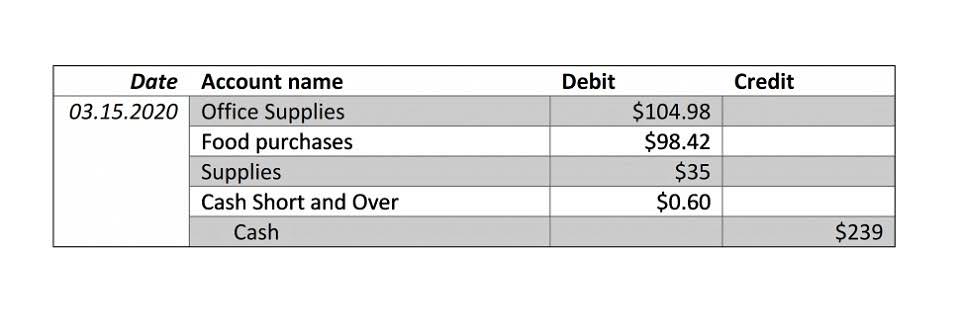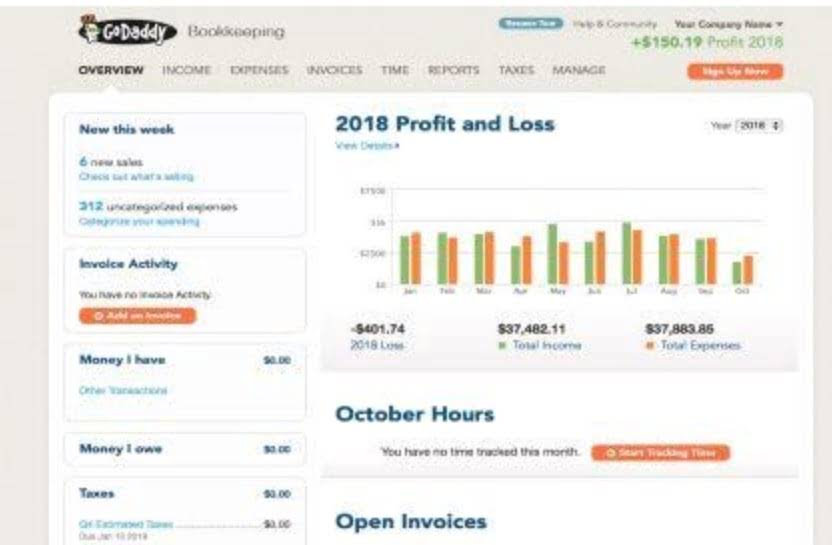If the person or company is not planning to issue you a 1099, you can still claim it as other income or self-employment income on your return, said Taylor. Form 1099-LTC documents income received as a result of long-term care or accelerated death benefits. Form 1099-H documents payments made in advance to help offset certain qualifying health insurance expenses. A contingent payment transaction Navigating Financial Growth: Leveraging Bookkeeping and Accounting Services for Startups is one in which the receipt, by or on behalf of the transferor, is subject to a contingency. The maximum determinable proceeds means the greatest amount of gross proceeds possible if all the contingencies are satisfied. If the maximum amount of gross proceeds cannot be determined with certainty, the maximum determinable proceeds are the greatest amount that can be determined with certainty.
What Is a 1099 Form?
If, as part of your trade or business, you made any of the following types of payments, use the link to be directed to information on filing the appropriate information return. If you have a mortgage loan, you’ll get a Form 1098 from the loan company showing the interest expense that you paid in 2006. It may also show the real estate taxes paid if the loan company pays those taxes for you. If it’s a new loan for this year, it may show the points that you paid. A form 1098 reports the amounts to the IRS (and you receive a copy of the form) that you may be able to deduct on your tax return. If you received money from a state, local or federal government — including a tax refund, credit or offset — you might get one of these.
All 22 Types of 1099 Tax Forms, and How to Know Which Ones You’ll Get
Every Form 1099 includes the payer’s employer identification number (EIN) and the payee’s Social Security (or taxpayer-identification) number. 1099-MISC is another commonly used form that reports an assortment of payments not tied to non-employee compensation for work. Specifically, 1099s are used to report earnings and proceeds other than wages, salaries and tips, https://megapolisnews.com/navigating-financial-growth-leveraging-bookkeeping-and-accounting-services-for-startups/ which are reported on the federal W-2 form. There are more than 20 different versions and variants of the 1099 form. Beginning in the 2020 tax year, Form 1099-NEC will be used to report non-employee compensation, one of the most common uses of the 1099. Currently, you will receive Form 1099-K if you’ve made over $20,000 and performed more than 200 transactions.
Who Needs to File a 1099 Form?
- If you’re a full- or part-time employee and paid through a payroll account, you’ll will receive a W-2 form after the end of the tax year.
- The 1099-MISC form and the 1099-NEC form are the most popular, but there are several 1099 forms for reporting benefits from schemes and transactions you engage in as a freelancer.
- Over 300,000 properties had foreclosure filings in 2022, according to a report from ATTOM, a real estate data company.
- Anybody responsible for closing a sale or exchange of real estate furnishes this statement to you, reporting the proceeds.
- Consult the IRS guidelines for a complete list of 1099s and instructions for each form.
In addition to the forms, I could provide a pre-addressed envelope for the sellers to send their forms to the IRS. To complete the filing process, you must order blank copies of IRS Form 1099-S and IRS Form 1096. These forms need to be printed with a very specific type of paper and ink, and while it’s possible to reproduce these https://virginiadigest.com/navigating-financial-growth-leveraging-bookkeeping-and-accounting-services-for-startups/ documents from home, it’s a lot easier just to order them from the IRS. If you are a seller, you file your own 1099-S because you have all the necessary information to file one. In some cases, a closing may go through a title company, escrow company, or closing attorney who will have the responsibility to file the 1099-S.
For example, a 1099 is typically issued by a financial services provider if a you earned $10 or more in interest income. Form 1099 is used to report certain types of non-employment income to the IRS, such as dividends from a stock or pay you received as an independent contractor. Form 1099-NEC is another common type of 1099 and is used to report a certain level of income paid outside of W-2 wages. Sole proprietors and companies of all sizes will often use contractors or freelancers for a range of different jobs, such as bookkeeping, consulting, or handiwork.
- That can be overwhelming to track, and you don’t want to pay tax penalties for filing late or not filing at all.
- If a taxpayer hasn’t received the expected 1099 for income earned—even if the business didn’t file the 1099 form—the taxpayer might be able to report it under miscellaneous income.
- The following is a list of transactions that are not reportable; however, you may choose to report them.
- For example, suppose you received a $100,000 payment from your car insurance company to cover your medical expenses and pain from whiplash you suffered in an accident.
- Do not file Copy A of information returns downloaded from the IRS website.
What If You Fail to File Form 1099-S?
- If you get a 1099-NEC from your employer, that’s a sign that the company sees you as an independent contractor rather than an employee.
- The 1099-S form should be submitted with the rest of the year’s tax documents.
- The taxpayer might not owe taxes on that gain since they may qualify for an exclusion of up to $250,000, depending on their tax situation.
- You should receive a 1099-INT form if you have a checking, savings, or another bank account that earns interest.
- In other words, if you freelanced, were self-employed or had a side gig, your clients should have sent you a Form 1099-NEC instead of a Form 1099-MISC early in the year.
See part L in the current General Instructions for Certain Information Returns. If you are required to file Form 1099-S, you must furnish a statement to the transferor. Furnish a copy of Form 1099-S or an acceptable substitute statement to each transferor. For more information about the requirement to furnish a statement to the transferor, see part M in the current General Instructions for Certain Information Returns. A sale of real estate under threat or imminence of seizure, requisition, or condemnation is generally a reportable transaction. Usually, anyone who was paid $600 or more in non-employment income should receive a 1099.
Payroll Service For Small Business
There are several types of 1099 forms, but the most common is 1099-MISC, in which your business reports miscellaneous income. Form 1099-MISC is different from Form W-2, which reports salary or hourly wages. If you got distributions from a pension, retirement plan, profit-sharing program, an IRA or an annuity, you might receive a 1099-R. If your long-term care insurance paid out benefits during the year, the insurer will probably file a Form 1099-LTC. If you received payments from the accelerated death benefits of a life insurance policy, those are reported on this form, too.
This is used for credit card debt forgiveness because the IRS often considers canceled debt taxable income. Form 1099-B reports proceeds from broker and barter exchange transactions. Brokers use this form to report the sale of stocks, securities, and the like. Brokers must submit a 1099-B to each individual to report gains or losses from transactions. Anyone responsible for closing a sale or an exchange of real estate furnishes this statement to you, reporting the proceeds.
Significance for payee’s tax return
Purchasing a house is now the most common reason for receiving a 1099-MISC, according to Pino, since you’ll have one-time property tax and mortgage-interest deductions. Once you have all your documents, decide if you plan to work with a tax professional this year to file. “I tell people every day that we tax accountants are a lot less busy in February than we are in March and April,” Pino said. For some taxpayers, the majority (or even all) of their earnings in a given year will be 1099 income. Examples include someone who lives mostly off of Social Security income (SSA-1099), investment withdrawals (1099-B, 1099-DIV) or retirement account withdrawals (1099-R). Here’s what to know about the different types of 1099 tax forms, how to confirm you’ve received all your paperwork, and tips for an easier filing season.
A 1099-S is issued to taxpayers for real estate transactions if they had closed a sale or an exchange during the tax year. Some examples of real estate transactions could be realizing gains or proceeds from the sale of land, commercial and industrial buildings, and residential properties, such as a home or condominium. 1099s are essential to keep track of income that isn’t recorded in your wages or salary found in a W-2. Indeed, the Internal Revenue Service (IRS) matches nearly all 1099s and W-2 forms (the wage-report forms from your employer) against your Form 1040 tax returns or other tax forms. The 1099s are sent to freelancers, independent contractors, stockholders who received dividends, bank account holders who were paid interest and others who received other non-wage compensation during a tax year.
Occasionally, there may be an issue with the taxpayer ID where backup withholding is necessary, which should be indicated on the form. Those forms, which include taxpayer ID numbers and the amount earned, are sent by the taxpayer directly to both the IRS and the payee. For example, if you’re self-employed, you might receive a 1099-NEC from a client reporting payments made to you. Or you might use the 1099-NEC form to report payments made to others as part of your business. If part of your credit card debt was canceled, you might receive a 1099-C, and if you received interest from a financial institution, you might get a 1099-INT from your bank.

